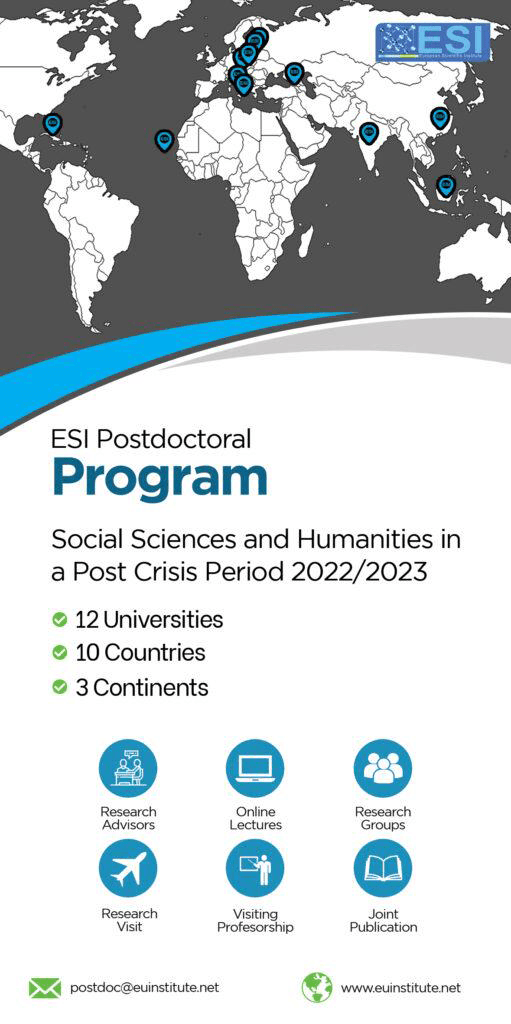Territorializing Aquatic Biodiversity: Local Ecological Knowledge (LEK) and Elasmobranch Distribution in the Kango Estuary (Gabon)
Abstract
Elasmobranchs (sharks and rays) are ecologically and socio-economically important, yet their distribution in Central African estuarine systems remains poorly understood. This study investigates the spatial and seasonal distribution of elasmobranchs in the Komo Estuary (Kango, Gabon) using Local Ecological Knowledge (LEK) collected through semi-structured interviews with 30 artisanal fishers, complemented by participatory mapping and GIS analyses. Four focal species were identified: Fontitrygon ukpam, F. margaritella, Carcharhinus leucas, and Sphyrna lewini. Among them, F. ukpam was the most widespread and abundant, extending from estuarine to upstream freshwater zones, whereas C. leucas and F. margaritella were concentrated in hot, saline lower-estuary waters. S. lewini was rarely reported. No statistically significant differences were detected between wet- and dry-season assemblages, although the data suggest a descriptive tendency toward slightly higher richness during the dry season. Temperature and salinity emerged as primary abiotic drivers, while prey availability, turbidity, and fishing pressure likely modulated these patterns. Spatial analyses (Kernel Density Estimation, Moran’s I, LISA, Getis-Ord Gi*) revealed localized hotspots and species aggregations not detectable through conventional surveys, underscoring the potential of LEK as a robust spatial dataset. Beyond documenting ecological distributions, fisher knowledge reflects lived territorialities, linking species ecology with social appropriation of aquatic environments. This research demonstrates the dual ecological and geographical value of LEK, contributing to biogeography by clarifying species–environment relationships, and to environmental geography by showing how local practices shape spatial perceptions of biodiversity. It also identifies priority estuarine sectors for monitoring and co-management in data-poor tropical systems.
Downloads
Metrics
References
2. Barletta, M., Barletta-Bergan, A., Saint-Paul, U., & Hubold, G. (2005). The role of salinity in structuring the fish assemblages in a tropical estuary. Journal of Fish Biology, 66(1), 45–72. https://doi.org/10.1111/j.0022-1112.2005.00582.x
3. Bennett, N. J., Roth, R., Klain, S. C., Chan, K., Christie, P., Clark, D. A., Cullman, G., Curran, D., Durbin, T. J., Epstein, G., Greenberg, A., Nelson, M. P., Sandlos, J., Stedman, R., Teel, T. L., Thomas, R., Veríssimo, D., & Wyborn, C. (2017). Conservation social science: Understanding and integrating human dimensions to improve conservation. Biological Conservation, 205, 93–108. https://doi.org/10.1016/j.biocon.2016.10.006
4. Bonfil, R., & Abdallah, M. (2004). Field identification guide to the sharks and rays of the Red Sea and Gulf of Aden. FAO.
5. Cardiec, F., Bertrand, S., Witt, M. J., Metcalfe, K., Godley, B. J., McClellan, C., Vilela, R., Parnell, R. J., & Le Loc’h, F. (2020). “Too big to ignore”: A feasibility analysis of detecting fishing events in Gabonese small-scale fisheries. PLOS ONE, 15(6), e0234091. https://doi.org/10.1371/journal.pone.0234091
6. Chikina, M. V., Tarasova, E. N., Berezina, N. A., & Maximov, A. A. (2023). Decadal stability of macrobenthic zonation along the salinity gradient in the Neva Estuary (Baltic Sea). Diversity, 15(6), 754. https://doi.org/10.3390/d15060754
7. Constance, J. M., Garcia, E. A., Pillans, R. D., Udyawer, V., & Kyne, P. M. (2024). A review of the life history and ecology of euryhaline and estuarine sharks and rays. Reviews in Fish Biology and Fisheries, 34(1), 65–89. https://doi.org/10.1007/s11160-023-09807-1
8. Cross, H. (2015). Elasmobranch capture by commercial small-scale fisheries in the Bijagós Archipelago, Guinea-Bissau. Fisheries Research, 168, 105–108. https://doi.org/10.1016/j.fishres.2015.03.018
9. Dedman, S., Moxley, J. H., Papastamatiou, Y. P., Braccini, M., Caselle, J. E., Chapman, D. D., Cinner, J. E., Dillon, E. M., Dulvy, N. K., Dunn, R. E., Espinoza, M., Harborne, A. R., Harvey, E. S., Heupel, M. R., Huveneers, C., Graham, N. A. J., Ketchum, J. T., Klinard, N. V., Kock, A. A., Lowe, C. G., ... Heithaus, M. R. (2024). Ecological roles and importance of sharks in the Anthropocene ocean. Science, 385(6708), eadl2362. https://doi.org/10.1126/science.adl2362
10. Delhumeau, P. (1969). Notice explicative n°36: Carte pédologique de reconnaissance à 1/200000, feuille Libreville–Kango. ORSTOM.
11. Dulvy, N. K., Simpfendorfer, C. A., Davidson, L. N. K., Fordham, S. V., Bräutigam, A., Sant, G., & Welch, D. J. (2017). Challenges and priorities in shark and ray conservation. Current Biology, 27(11), R565–R572. https://doi.org/10.1016/j.cub.2017.04.038
12. Fleming, C. H., & Calabrese, J. M. (2016). A new kernel density estimator for accurate home‐range and species‐use area estimation. Methods in Ecology and Evolution, 8(5), 571–579. https://doi.org/10.1111/2041-210X.12673
13. Gausmann, P. (2021). Synopsis of global fresh and brackish water occurrences of the bull shark (Carcharhinus leucas, Müller & Henle, 1839). Integrative Systematics: Stuttgart Contributions to Natural History, 4, 55–213. https://doi.org/10.18476/2021.100055
14. Getis, A., & Ord, J. K. (1992). The analysis of spatial association by use of distance statistics. Geographical Analysis, 24(3), 189–206. https://doi.org/10.1111/j.1538-4632.1992.tb00261.x
15. Guest, G., Bunce, A., & Johnson, L. (2006). How many interviews are enough? An experiment with data saturation and variability. Field Methods, 18(1), 59–82. https://doi.org/10.1177/1525822X05279903
16. Heupel, M. R., Knip, D. M., Simpfendorfer, C. A., & Dulvy, N. K. (2014). Sizing up the ecological role of sharks as predators. Marine Ecology Progress Series, 495, 291–298. https://doi.org/10.3354/meps10597
17. Jabado, R. W., Chartrain, E., De Bruyne, G., Derrick, D., Diop, M., Doherty, P., Keith Diagne, L., Leurs, G. H. L., Metcalfe, K., Sayer, C., Seidu, I., Tamo, A., VanderWright, W. J., & Williams, A. B. (2021). Fontitrygon ukpam. The IUCN Red List of Threatened Species, 2021: e.T39414A104174049. https://dx.doi.org/10.2305/IUCN.UK.2021-2.RLTS.T39414A104174049.en
18. Johannes, R. E., Freeman, M. M. R., & Hamilton, R. J. (2000). Ignore fishers’ knowledge and miss the boat. Fish and Fisheries, 1(3), 257–271. https://doi.org/10.1046/j.1467-2979.2000.00019.x
19. Kennish, M. J. (2021). Drivers of change in estuarine and coastal marine environments: An overview. Open Journal of Ecology, 11(3), 224–239. https://doi.org/10.4236/oje.2021.113017
20. Khojasteh, D., Rao, S., McSweeney, S., Ibaceta, R., Nicholls, R. J., French, J., Glamore, W., Largier, J. L., Adams, J., Hughes, M. G., Barry, M., Power, H. E., Du, J., Tucker, T. A., Cienfuegos, R., Catalan, P. A., & Hanslow, D. (2025). Intermittent estuaries deserve global attention as vulnerable and vital ecosystems. Communications Earth & Environment, 6, 443. https://doi.org/10.1038/s43247-025-02428-5
21. Lefebvre, H. (1974). La production de l’espace. Anthropos.
22. Leeney, R., & Downing, N. (2015). Sawfishes in The Gambia and Senegal – shifting baselines over 40 years. Aquatic Conservation: Marine and Freshwater Ecosystems, 25(5), 1–10. https://doi.org/10.1002/aqc.2545
23. Lerique, J. (1965). Hydrologie du bassin du Komo (Gabon). Cahiers ORSTOM, Série Hydrologie, 2(1), 45–62.
24. Maloba Makanga, J. D. (2010). Les précipitations au Gabon : Climatologie analytique en Afrique. L’Harmattan.
25. Mvomo Minko, Y. I., Sadio, O., Mbega, J.-D., Schaal, G., & Le Loc’h, F. (2025). Length–weight relationships of elasmobranchs caught by artisanal fisheries from southern Gabon. Journal of Applied Ichthyology, 2025(1), 4821258. https://doi.org/10.1155/jai/4821258
26. Ndzengboro-Endamane, J. P., Mbega, J. D., Obame-Nkoghe, J., Mabicka, B. R., Okouyi-Okouyi, M., Moupela, C., Ekogha, E., Onguene, A., & Mounzéo, H. (2023). Étude agropédologique des sols de Kango (Gabon): Contraintes chimiques et potentialités d’amendements. African Journal of Agricultural Research, 19(9), 653–664. https://doi.org/10.5897/AJAR2023.16977
27. Oksanen, J., Simpson, G. L., Blanchet, F. G., Kindt, R., Legendre, P., Minchin, P. R., O’Hara, R. B., Solymos, P., Stevens, M. H. H., Szoecs, E., & Wagner, H. (2022). vegan: Community Ecology Package (Version 2.6-4) [R package]. https://CRAN.R-project.org/package=vegan
28. Pacoureau, N., Rigby, C. L., Kyne, P. M., Sherley, R. B., Winker, H., Carlson, J. K., Fordham, S. V., Barreto, R., Fernando, D., Francis, M. P., Jabado, R. W., Herman, K. B., Liu, K.-M., Marshall, A. D., Pollom, R. A., Romanov, E. V., Simpfendorfer, C. A., Yin, J. S., Kindsvater, H. K., & Dulvy, N. K. (2021). Half a century of global decline in oceanic sharks and rays. Nature, 589, 567–571. https://doi.org/10.1038/s41586-020-03173-9
29. Raffestin, C. (1986). Territorialité: Concept ou paradigme de la géographie sociale? Geographica Helvetica, 41(2), 91–96. https://doi.org/10.5194/gh-41-91-1986
30. Seidu, I., Brobbey, L. K., Danquah, E., Oppong, S. K., van Beuningen, D., & Dulvy, N. K. (2022). Local ecological knowledge, catch characteristics, and evidence of elasmobranch depletions in western Ghana artisanal fisheries. Human Ecology, 50(5), 1083–1103. https://doi.org/10.1007/s10745-022-00371-z
31. Silvano, R. A. M., & Valbo-Jørgensen, J. (2008). Beyond fishermen’s tales: Contributions of fishers’ local ecological knowledge to fish ecology and fisheries management. Environment, Development and Sustainability, 10, 657–675. https://doi.org/10.1007/s10668-008-9149-0
32. Simpfendorfer, C. A., Freitas, G. G., Wiley, T. R., & Heupel, M. R. (2005). Distribution and habitat partitioning of immature bull sharks (Carcharhinus leucas) in a southwest Florida estuary. Estuaries, 28(1), 78–85. https://doi.org/10.1007/BF02732755
33. Skidmore, A. K., Franklin, J., Dawson, T. P., & Pilesjö, P. (2011). Geospatial tools address emerging issues in spatial ecology: A review and commentary on the Special Issue. International Journal of Geographical Information Science, 25(3), 337–365. https://doi.org/10.1080/13658816.2011.554296
34. Tuan, Y.-F. (1974). Topophilia: A study of environmental perception, attitudes, and values. Prentice Hall.
35. Whitfield, A. K. (1999). Ichthyofaunal assemblages in estuaries: A South African case study. Reviews in Fish Biology and Fisheries, 9(2), 151–186. https://doi.org/10.1023/A:1008994405375
36. Wickham, H. (2016). ggplot2: Elegant graphics for data analysis. Springer-Verlag. https://doi.org/10.1007/978-3-319-24277-4_9
Copyright (c) 2025 Teddy Tanguy Mbeng Mendene, Judicael Regis Kema Kema, Marjolaine Okanga Guay, Igor Akendengue Aken, Mvomo Minko Youri, Aganga Christy Achtone Kema Kema Nkollo

This work is licensed under a Creative Commons Attribution 4.0 International License.








